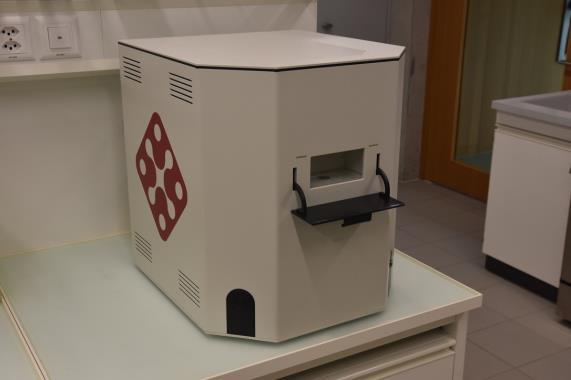
3 minute read
Design and Development of Artificial Skin Models for Tactile Sensing Applications
Contributors: F. Spano, D. Fehr, M. Bonmarin, J. Blunschi, R. Sassenburg. Duration: 2019–2021
Despite the forthcoming arrival of entirely cell-based skin models, the development of the artificial skin models is still progressing and relevant. Indeed, the cell-based skin models are far from reproducing the human skin properties and the needs of the community. In particular, there is still a need for reproducible and stable artificial skin models mimicking different properties of the human skin. Moreover, and fortunately, due to new regulations and ethical issues, animal testing is not anymore tolerated. So, the design and development of artificial skin models simulating various properties of the human skin, as for example, the mechanical, thermic, sweating and tactile properties of the human skin are considered [1-2].
Advertisement
Fig. 1: Illustrations of the different fabrication phases: material development and real palm replica; Multi-layered skin model with the capacitive-sensing grid and the LED matrix, controlled by the prototyped electronics. The artificial skin models are generally constituted by a multi-layered combination of materials mimicking the real human skin and its different layers (stratum corneum, epidermis, dermis and sub dermis). The materials used to simulate the physical properties of the real human skin are various [3], often siliconbased materials such as polydimethylsiloxane or gelatinous materials [4]. They are selected in function of the properties to simulate. Concerning the fabrication processes, we are using classical deposition techniques such as drop casting and bar coating for example. Additionally, we are implementing new technologies such as 3D bioprinting for example.

Fig. 2: Illustrations of the tactile capabilities of the artificial skin model implementing the real human texture and mechanical properties in addition to the change of colours in function of the applied force and the multipoint capacitive sensitivity. In this particular Bachelors’ project, we focus on the design and fabrication of an artificial tactile skin, a skin model combining the mechanical properties of the human skin and its texture, and in addition a capacitive sensing device combined with a LED matrix (Fig. 1) indicating the multipoint localization and the applied forces by simple changes in colours as illustrated in Fig. 2. Attention was provided on the fabrication and replication of a real human palm. The mechanical properties were obtained by generating a multi-layered material made of several silicon-based polymers layer by layer (Dragon skin FX Pro and Ecoflex). Moreover, a replica of a real human palm was realized reproducing precisely the hand texture increasing the feeling to interact with a real human hand. Separately, a flexible capacitive sensor was designed and fabricated by implementing a grid of wires embedded in a polymeric matrix. In a successive step, a LED matrix was connected to the capacitive grid and programmed. The tactile skin is able to react to multipoint touch and indicate the variation of applied pressure by change of colours. Such skin models can be envisaged for providing an interface for robots to interact in a world surrounded by humans, or simply for interactive devices for communication in smart cities.
Literature:
[1] M. Guan et al., Development of a sweating thermal skin simulant for heat transfer evaluation of clothed human body under radiant heat hazard, Applied Thermal Engineering 166, 114642 (2020). [2] L. Zhai et al., Development of a multi-layered skin simulant for burn injury evaluation of protective fabrics exposed to radiant heat, Fire and Materials 43 (2), 144-152 (2019). [3] A. K. Dabrowska et al., Materials used to simulate physical properties of the human skin, Skin Research and Technology 2016; 22: 3-14. [4] A. Dabrowska et al., A water-responsive, gelatine-based human skin model, Tribology International 113 (2017) 316-322.








